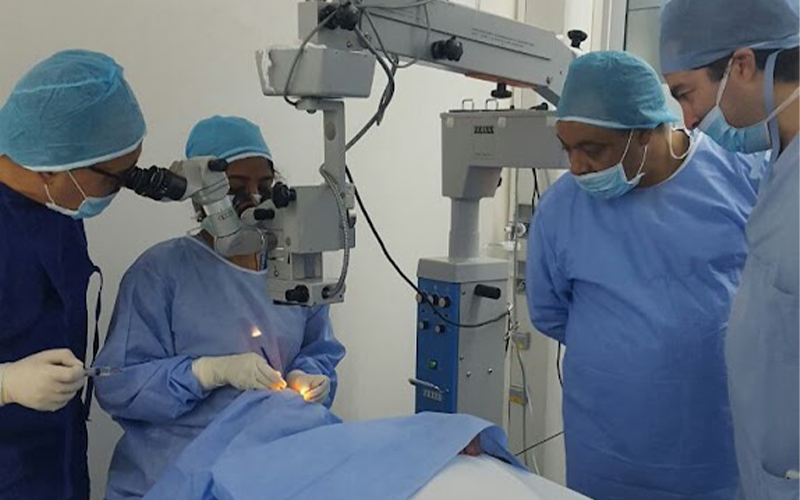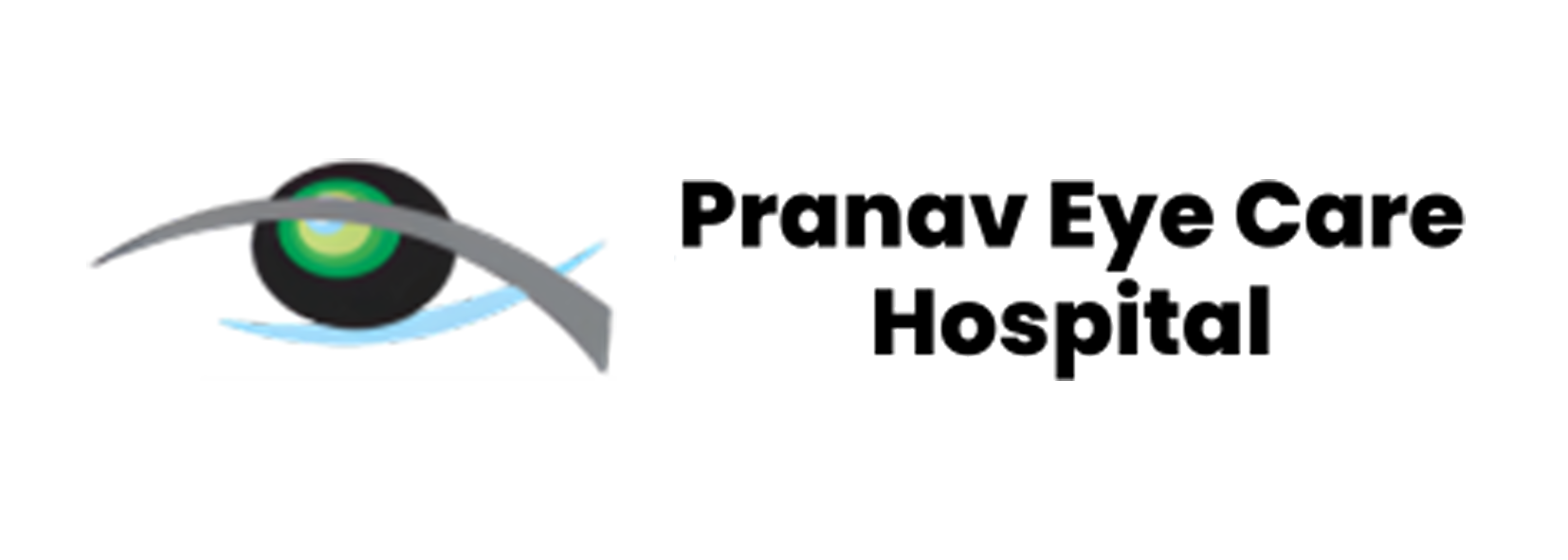
A cataract is clouding or opacity of the lens inside the eye:
Inside the eye, behind the colored part (the iris) with a black hole in the middle (the pupil), is the lens. In a normal eye, this lens is clear. It helps focus light rays on to the back of the eye (the retina), which sends messages to the brain allowing us to see. When cataract develops, the lens becomes cloudy and prevents the light rays from passing through.
What symptoms do cataracts cause?
Cataracts usually form slowly over years causing a gradual blurring of vision, which eventually is not correctable by glasses. In some people the vision can deteriorate relatively quickly. Developing cataract can also cause glare, difficulty with night-time driving and multiple images in one eye which can affect the quality of the vision.
Do cataracts spread from eye to eye?
No. But often they develop in both eyes either at the same time or one after the other with a gap between.
Are there different kinds of cataract?
Yes. Most cataracts are age-related, but other examples include congenital (present at birth), drug induced (steroids), and traumatic (injury to the eye).
Is there a link between diabetes and cataracts?
Yes. Cataract is more common in people who have certain diseases such as diabetes.
Are cataracts just a part of getting old?
Most forms of cataract develop in later adult life. This is called age-related cataract, and can occur at any time after the age of 40. The normal process of ageing causes the lens to gradually become cloudy. Not all people who develop cataract require treatment.
Can children have a cataract?
Yes, but this is rare.
I didn't know that I had a cataract until my optician told me – is that normal?
At first, you might not be aware that cataract is developing and, initially, it may not cause problems with your vision. Generally, as cataract develops over time, you start to experience blurring of vision. In most cases, eyes with a cataract look normal but, if the cataract is advanced, your pupil may no longer look black and can look cloudy or white.
I feel that I need to go to the optician more often to get new glasses.
You may need to get new prescription glasses more frequently when the cataract is developing. Eventually, when your cataract worsens, stronger glasses may no longer improve your sight and you might have difficulty seeing things even with your glasses on.
TREATMENT
When do I have my cataract treated?
In many cases, cataract is harmless and may be left in your eye. It is usually safe not to have surgery if you feel that you do not have a problem with your vision. When the cataract progresses to the point that it is interfering with daily activities or lifestyle, even when using up-to-date glasses, then cataract surgery may be the next step. Modern surgery is highly successful for the majority of patients but, as with all surgery, there are risks. Cataract surgery is performed when you have a problem with your vision and you want to do something about it.
Can anything be done to stop my cataract worsening?
There is no known method of preventing cataract.
I have cataract developing in both eyes - are both operated at the same time?
- Intense pain in the eye or foreheadIt is common for cataract to develop more quickly in one eye than in the other. The timing of an operation is agreed after discussion between you and the cataract team.
- Usually, your more seriously affected eye is operated on first. Sometimes it is advisable to have your second eye operated on even if it causes you few vision symptoms, to balance the spectacle prescription so that your eyes can be used comfortably together.
- Do I need any special tests before the operation
- Seeing rainbows or halos around lights
- Yes. Special tests are required to determine the strength of lens implant which is inserted into the eye. These are usually done prior to the operation day and may be done at your first clinic attendance or a few weeks before surgery.
- You may also have tests for your general health, such as blood tests and an electrocardiogram (ECG).
What does the cataract operation involve?
An experienced eye surgeon will carry out your operation . Your eye is never removed and replaced when operations are carried out.
The commonest form of cataract surgery is performed by surgeons using a small incision (wound) and a process called "phacoemulsification", often shortened to "phaco". This technique uses ultrasound to soften the lens, which is then broken up and flushed out using fine instruments and special fluids. A clear artificial lens (intraocular lens implant or IOL), made of a plastic-like material, is placed inside the eye. The back membrane of the lens (capsule) is left behind and this holds the artificial lens in place.
The wound is very small and most patients do not require stitches, although very fine stitches are sometimes needed to close the wound safely. This can occasionally cause some temporary post-operative irritation. Depending on the type of stitch used, these may need to be removed.
Are cataracts removed by laser?
New technology is being developed using a femtosecond laser to automate key parts of the procedure. However, the surgeon still needs to operate using phacoemulsification to complete the surgery at present.
What is it like during the operation?
- The operation is performed while you are lying down on your back. Your face is partially covered by a sterile sheet. If you have difficulty lying flat or are claustrophobic, we will do our best to make sure that you are comfortable before the operation starts, but please tell the nurses during your pre-operative assessment.
- During the operation, the surgeon uses a microscope and the bright light from the microscope and the covering sheet mean that you do not see the operation or the detail of the instruments but you may see moving shapes.
- Usually you will be awake during the operation and will be aware of a bright light, and often pretty coloured lights and shadows. You may feel the surgeon's hands resting gently on your cheek or forehead.
- A lot of fluid is used during the operation. Sometimes, excess fluid may escape under the sheet and run down the side of your face, into your ear or on your neck, which can be uncomfortable.
- You might hear conversations during the operation. These could be about the operation or about other subjects. Please do not join in as it is important that you remain still during the procedure.
What kind of anaesthetic is necessary?
Most operations for cataract are performed under local anaesthetic, in which you are awake but your eye is numb. This is usually given by eye drops or an injection around your eye. A small number of patients require sedation or even a general anaesthetic, where you are asleep.
Will I have to stay in hospital?
Cataract surgery is performed on a day-care basis. This means you are admitted to hospital, have your operation and are discharged home all in the same day. You could spend several hours in hospital from arrival to discharge.
What are my choices for vision and glasses after the operation?
Your lens, which helps you focus, is removed during the operation and is replaced with an artificial lens, the intraocular lens implant. There is a choice of different strengths (powers) of lenses which, just like different strengths of glasses lenses, affect how clearly you see when looking into the distance or when looking at near things such as reading a book.
During your initial assessment, the cataract team will discuss with you whether you want to have better focus for close vision or for distance vision. Most people choose to aim for good distance vision after the operation. If you choose this option, you will usually need reading glasses and you may still need glasses for fine focusing in the distance.
Multifocal lenses
Multifocal lenses are lenses that aim to correct vision for both near and distance. However, the quality and biocompatibility of standard monofocal and multifocal is the same. Multifocal lenses do not work for all patients and may cause some visual quality problems.
What to look out for after surgery
- Increasing redness, pain, blurring of vision or yellow/green discharge.
- This can indicate a serious infection or inflammation.
- Blurring of the central vision
- This may indicate macular oedema (water logging of the central part of the retina).
- Red sore eye after stopping drops
- This can be due to a recurrence of post-operative inflammation inside the eye.
AFTERCARE
How to put in the drops
- Tilt your head back
- Gently pull down your lower lid with one hand
- Look up and allow drops to fall inside lower lid
- Do not let the tip of the bottle come in contact with your eye
- The eye drops help reduce the risk of infection and inflammation after surgery and may be necessary for one to two months.
When can I wash my face and hair after the operation?
You are advised to be careful when washing: do not directly splash water into your face in the shower or immerse your head in the bath for one week after surgery, but a clean face cloth can safely be used.
Does the cataract recur?
No, but you can develop a thickening or clouding of the posterior capsule membrane behind your new lens implant in the months or years following your surgery, which occurs in approximately one in 10 cataract surgery patients. This is called posterior capsular opacification and causes blurring of vision.
This can be treated as an outpatient with a laser procedure, known as YAG laser capsulotomy. This involves one outpatient visit. It is usually very effective, painless and quick, but can very occasionally cause complications such as retinal detachment or waterlogging of the central part of the retina. The risks of YAG laser treatment are smaller than the risks of the original cataract procedure and will be detailed at your consultation.


